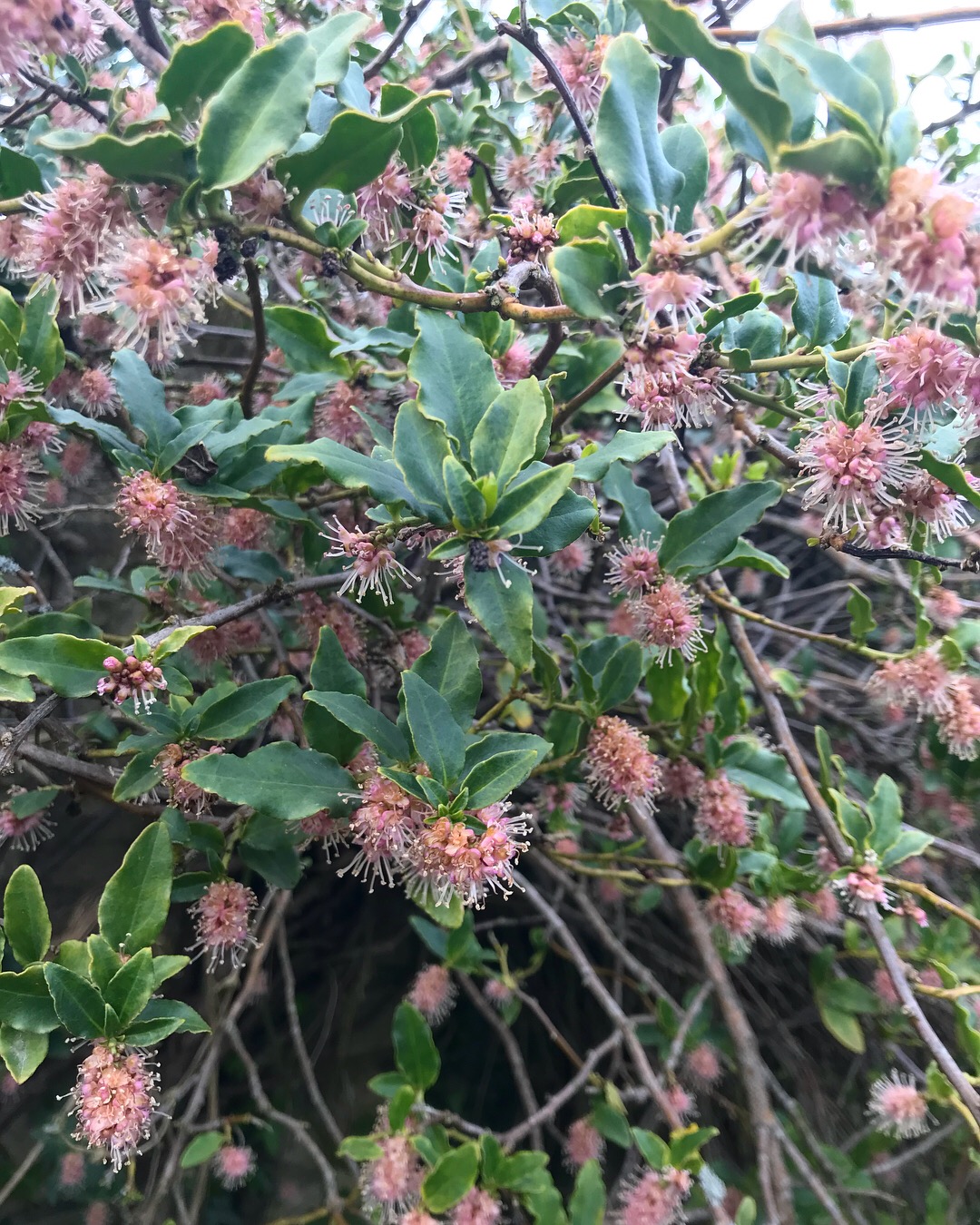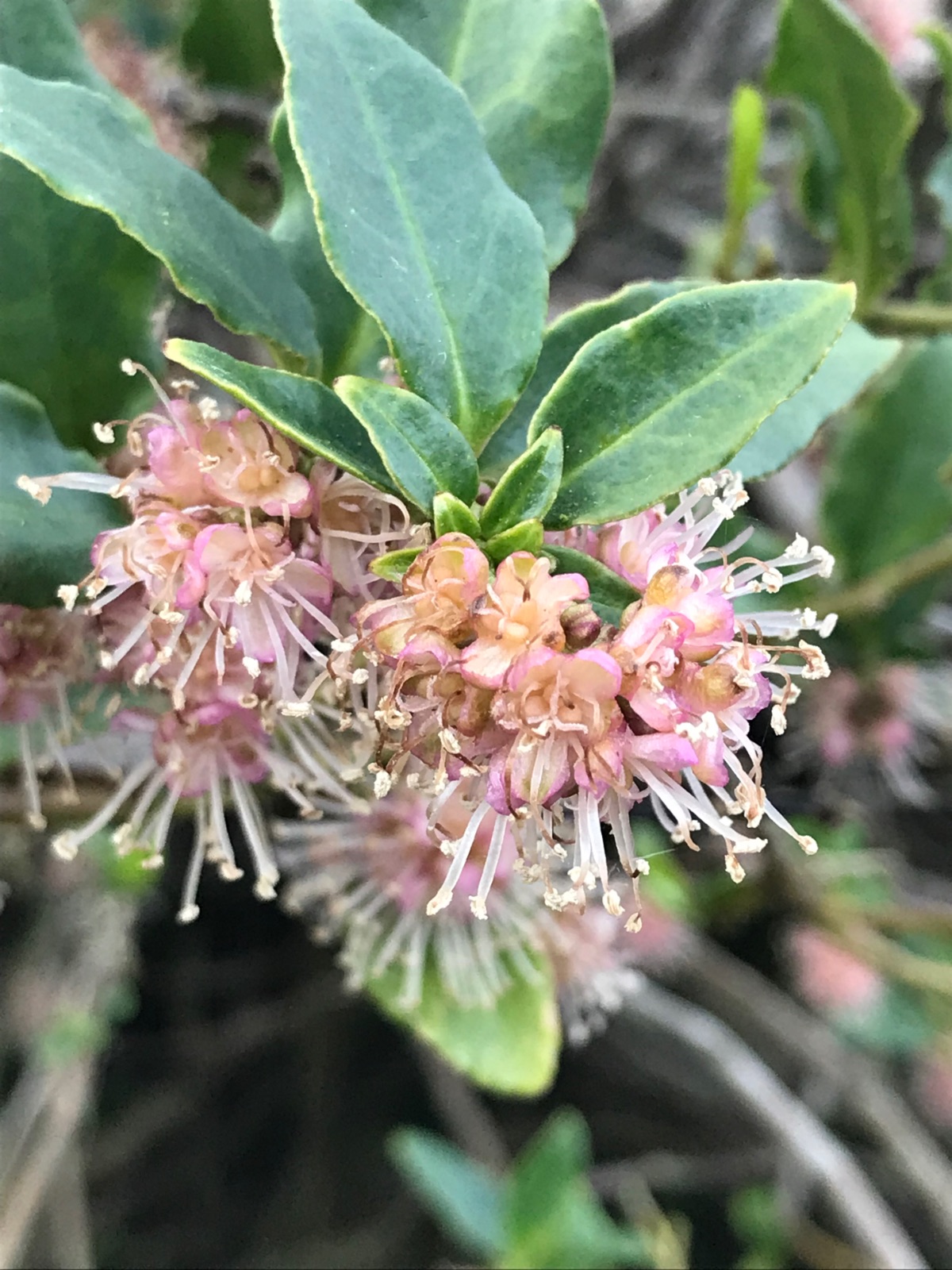Ercilla volubilis
Credits
Article from Bean's Trees and Shrubs Hardy in the British Isles
Recommended citation
'Ercilla volubilis' from the website Trees and Shrubs Online (treesandshrubsonline.
Genus
Synonyms
- Galvezia spicata Bert, (nomen)
- Bridgesia spicata (Bert.) Hook. & Arn.
- Ercilla spicata (Bert.) Moquin
Other taxa in genus
An evergreen climber producing a dense mass of slender, sparsely branched, very leafy stems, ultimately 15 to 20 ft high, attaching themselves to walls or tree-trunks by means of aerial roots; young wood glabrous. Leaves alternate, 1⁄2 in. or less apart; ovate or oblong, 3⁄4 to 11⁄2 in. long, 1⁄2 to 1 in. wide; tapered or rounded at the base, blunt at the apex, wavy at the margin; glabrous, stout, fleshy, dark shining green; stalk 1⁄8 to 1⁄4 in. long. Flowers produced in March and April in dense spikes which are 1 to 11⁄2 in. long, 1⁄2 in. through, cylindrical. Calyx 1⁄3 in. across, with five dull white, ovate sepals; stamens white, about eight, 1⁄4 in. long, much protruded. Corolla none. Bot. Mag., n.s., t.780.
Native of Chile; introduced in 1840 by Thomas Bridges, a very industrious collector of South American plants. The genus was named after him by Hooker but the name had to give way to an earlier one. It lives outside at Kew, and flowers regularly, but succeeds better against a wall, where, if the leading shoots are securely nailed, it will form a heavy tangle. Its natural means of attachment appear to be scarcely efficient enough to enable the plant to bear its own weight on a vertical surface.


